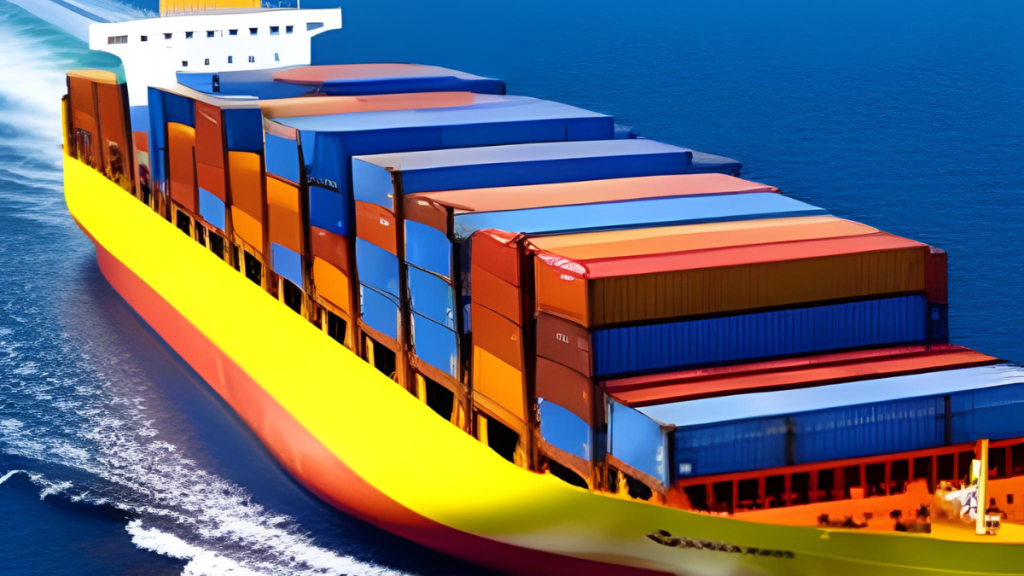SEA FREIGHT
Speed up your business with these expert tips on "Ocean Freight". Analyse and discover this TIP!
Ocean freight is the cost charged for the carriage of goods on ships. Goods can be transported in bulk (solid, liquid or gaseous) or in general cargo, ranging from raw materials to consumer goods. The transport can be carried out by a regular commercial line (Liner) using vessels that cover fixed routes, or by contracting an independent vessel (Tramping) for large volumes.
The terms Liner In, Liner Out (LILO), Free In, Liner Out (FILO) and Liner In, Free Out (LIFO) refer to who bears the costs of loading and unloading at origin and destination, depending on whether the cargo is carried by the charterer or the carrier. In the case of tramping, the terms Free In and Out (FIO) and Free In, Out and Stowed (FIOS) refer to who bears the costs of loading, unloading and stowage. Freight rates are divided into Base Freight, Adjustment Factors and Discounts.
Some practical examples of ocean freight could be
- A company exporting 10,000 tonnes of maize in bulk from Argentina to China hires a bulk carrier to transport the cargo. The freight rate is based on the size of the vessel and the distance of the voyage, and a contract is established between the exporting company and the shipping company for the transportation of the cargo.
- An electronics manufacturer in China ships a container full of goods to the United States via a regular shipping line. The shipment is made under a LILO (Liner In, Liner Out) agreement, which means that the freight at origin and destination is handled by the shipping company.
- A wine importing company in Spain hires a tanker to transport 5,000 tonnes of wine in bulk from Chile. The freight price is based on the amount of cargo transported and the distance of the voyage. The cargo is transported in properly insulated and controlled cellars to guarantee the quality of the wine during transport.
In summary, ocean freight is a common way of transporting large quantities of goods over long distances by ship, and the freight rate is based on factors such as the size of the vessel, the amount of cargo carried and the distance of the voyage.
How can Inteligencia Artificial (IA) help me to understand ocean freight rates?
As a trained language model, ChatGPT can help you get more detailed information about ocean freight. You can ask specific questions about terms and concepts related to ocean freight, as well as get practical examples of how they apply in specific situations.
In addition, ChatGPT can provide you with resources and links to useful websites that offer detailed information on ocean freight, such as prices, rates and shipping terms.
Ocean freight is the transport of goods by ship and at the price related to the transport itself.
THE WAYS IN WHICH CARGO CAN GO ON SHIPS ARE:
BULK GOODS
- Bulk solids (Like iron, or lesser ones like sugar).
- Liquid bulk (e.g. oil).
- Bulk gases (e.g. natural gas).
Bulk cargoes generally go in properly insulated holds or tanks. Other goods are referred to as "general cargo"and ranges from raw materials to consumer goods. General cargo can be transported on pallets, in containers or in vehicles in warehouses.
OTHER TERMS RELATE TO THE WAY IN WHICH THE FREIGHT OF THE GOODS IS CARRIED OUT:
- LinerThe regular commercial line, which is the most frequent because it uses vessels that cover fixed routes.
- TrampingIn the case of a freight forwarder, an independent vessel is contracted to carry out one or more cargoes and is usually used for large volumes.
IN THE CASE OF LINER FREIGHT, THESE MAY BE:
-
LILO ("LINER IN, LINER OUT")
Loading at both origin and destination is the responsibility of the transport company.
-
FILO ("FREE IN, LINER OUT")
The load is borne by the person who wishes to transport it at the point of origin, while at the destination it is borne by the company carrying out the transport.
-
LIFO ("LINER IN, FREE OUT")
The freight is carried by the transport company at origin, while at destination it is carried by the consignee. In the case of freight carried out by "tramping".
-
FIO ("FREE IN AND OUT")
In this case, the costs of loading and unloading the goods are borne by the charterer, the person who wishes to carry out the shipment.
-
FIOS ("FREE IN, OUT AND STOWED")
As above, and also includes stevedoring charges.
Liner freight rates are usually split between the Base Rate and Adjustment Factors, which are surcharges to the rates, and discounts. The rates for Liner freight are usually divided between the Base Rate and the Adjustment Factors, which are surcharges to the rates, and the discounts.
APPLY THIS TIP TO YOUR PROJECT
QUIZ
- 💻 PRACTICE with an expert in the next practical webinar.
- 🔎 CONSULT more related TIPs with this same theme.
- 📖 AMPLIA your knowledge by downloading this EBOOK.
THINK ABOUT YOU
- 🚀 IMPULSA your company in the next acceleration programme, ¡book your place now!
- 🥁 PRACTICE with your project in this practical webinar, ¡apply for your place!.
- 🌐 CONTACT with other entrepreneurs and companies, ¡register and take part in the next Networking!
THINK ABOUT HELPING OTHERS
- 🤝COLLABORATE as a volunteer: expert, mentor, inverter, awarding, Spreading the word, challenging, innovating, creating a TIP...
- 💬 RECOMMENDS this programme to reach out to more entrepreneurs by Google.
- 👉 SHARE your learning!
- 📲 SEND this TIP 👇









